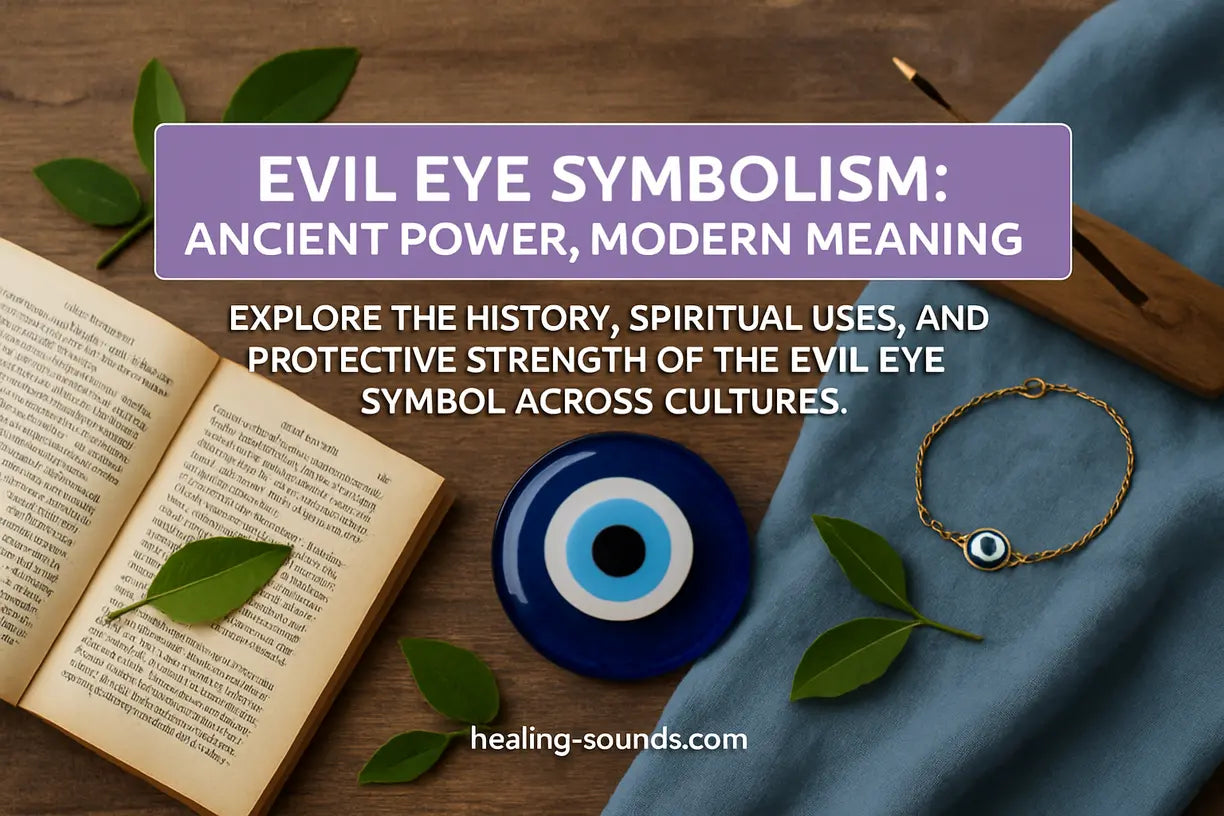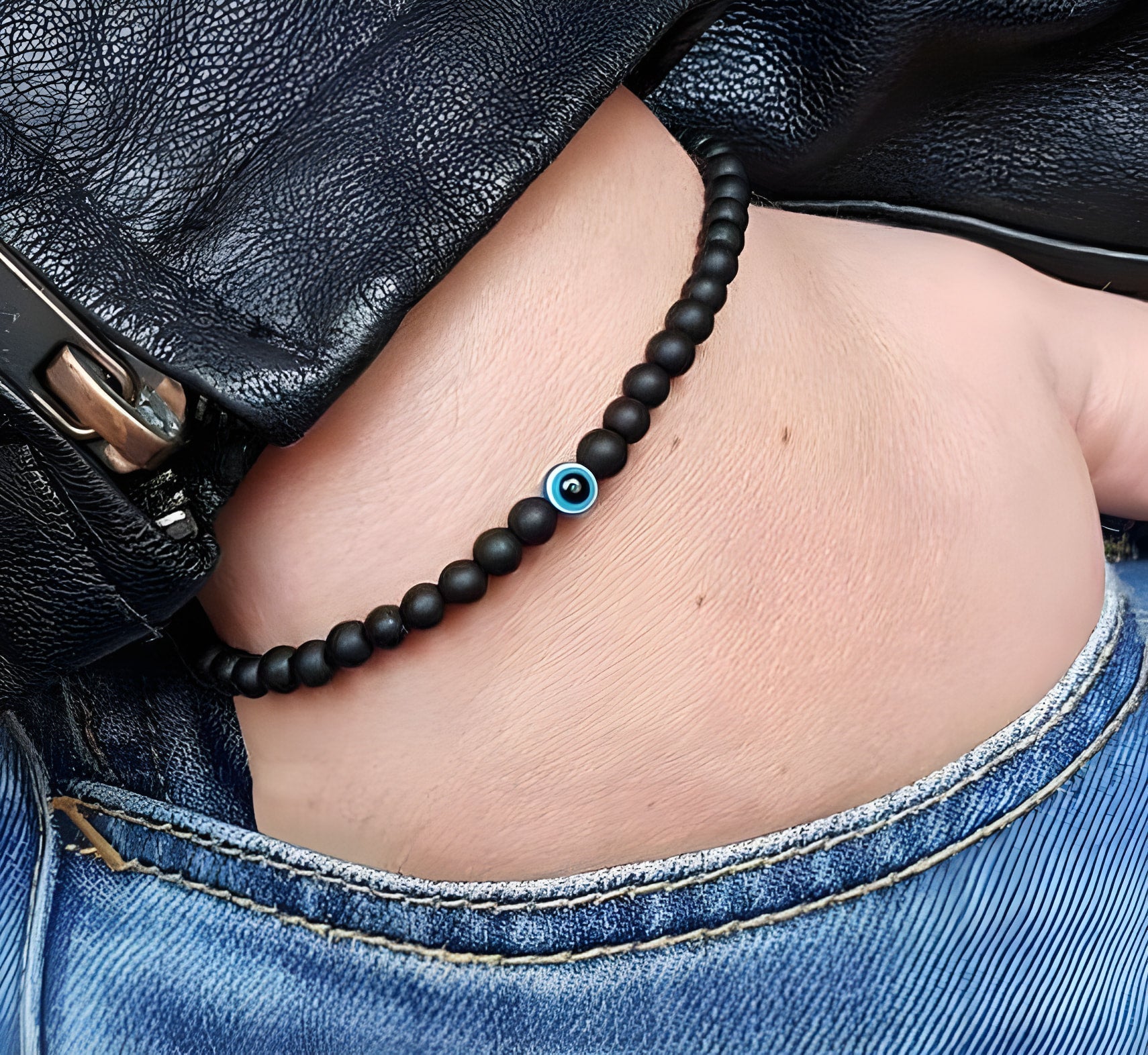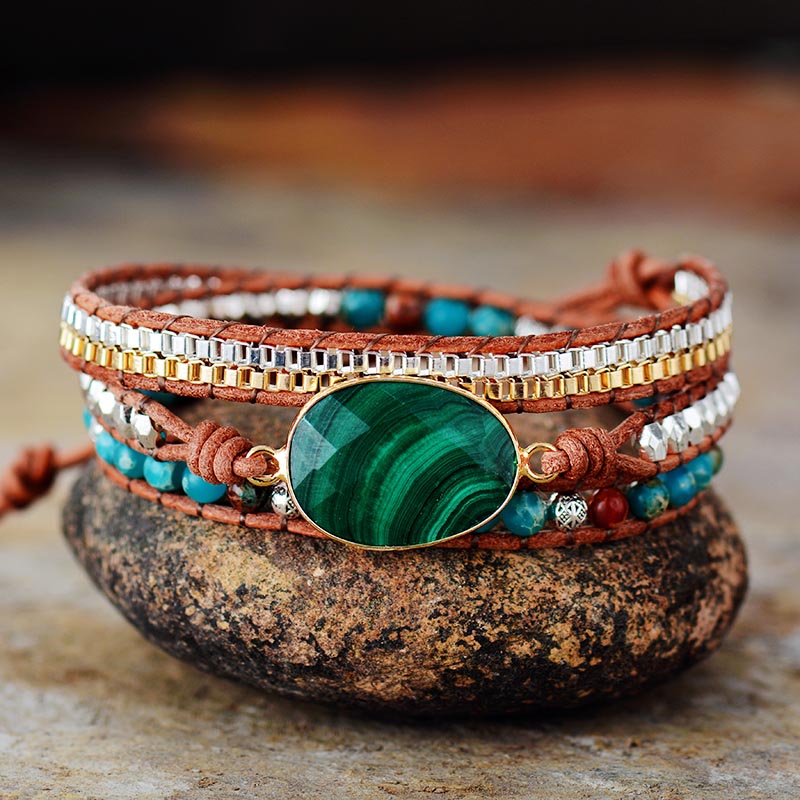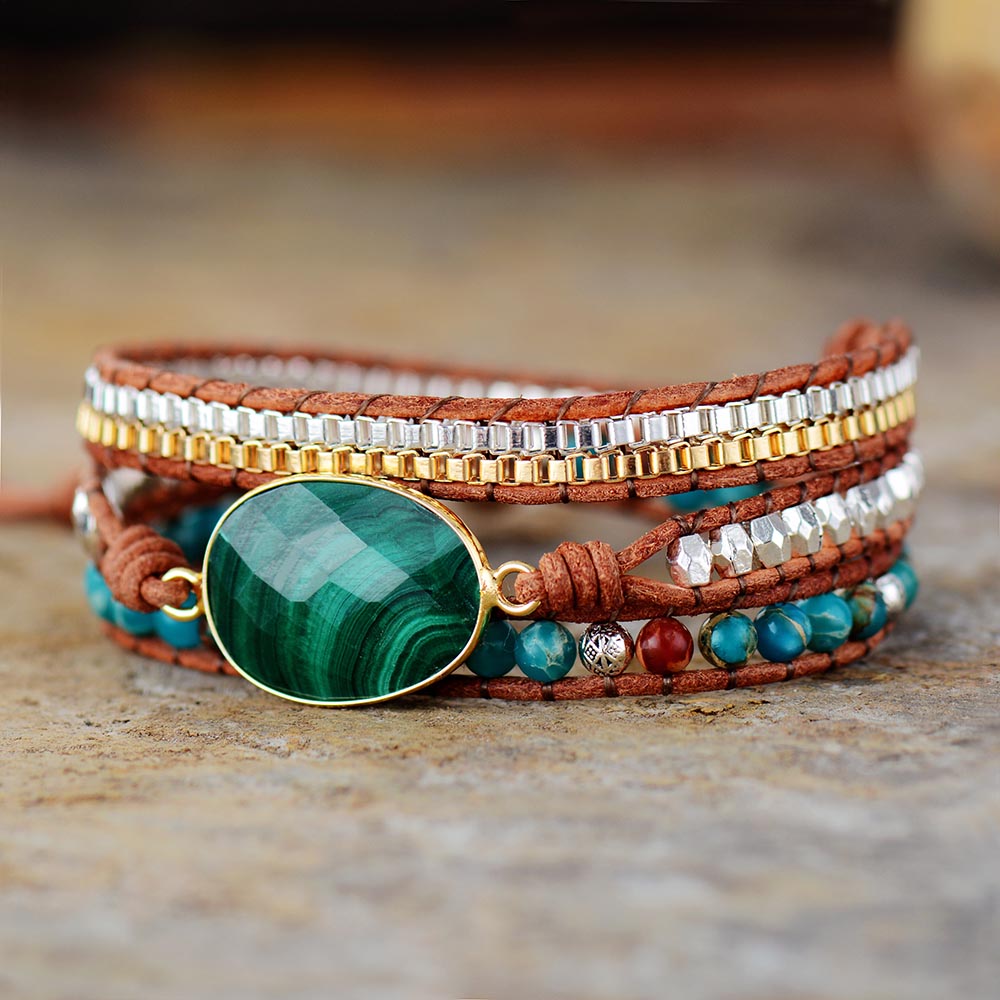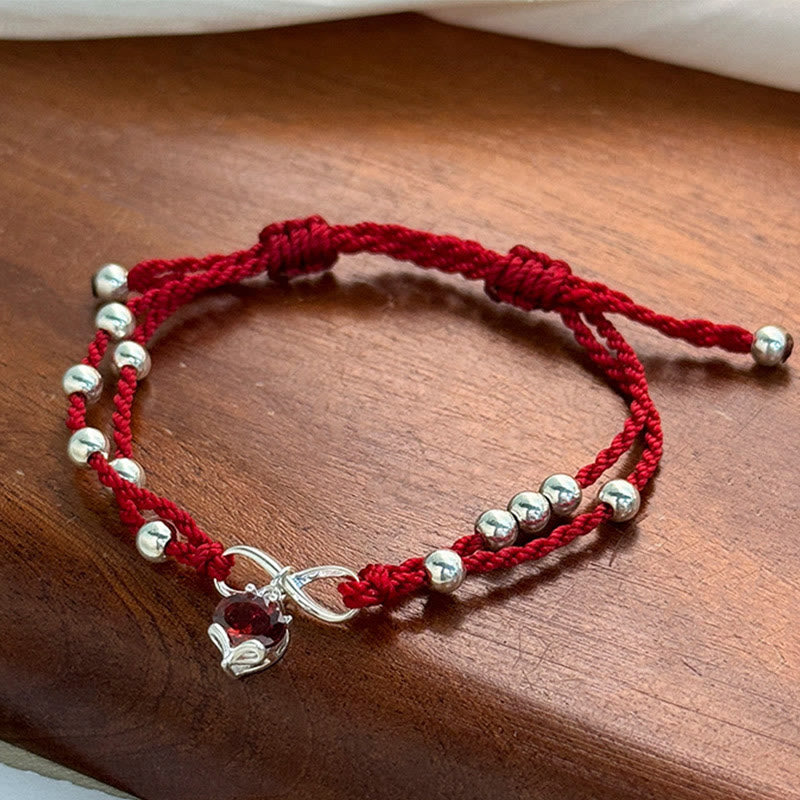Le symbolisme du mauvais œil a traversé les siècles et les cultures, captivant les personnes en quête de bien-être spirituel par son charme mystérieux et ses profondes vertus protectrices. Plus qu'un simple motif frappant, le mauvais œil est un emblème puissant, profondément ancré dans l'histoire et les croyances humaines. Si vous êtes attiré par la guérison holistique, les traditions culturelles et la puissance des bijoux symboliques, comprendre la signification du mauvais œil peut vous ouvrir une nouvelle dimension de conscience spirituelle et de protection personnelle. Cet article explore la riche mosaïque du symbolisme du mauvais œil, ses origines anciennes, sa signification culturelle et son pouvoir durable de talisman contre la négativité.
Qu'est-ce que le mauvais œil ? Dévoilement d'une croyance ancestrale
À la base, le mauvais œil est un type spécifique de malédiction ou de légende, censé être lancé par un regard malveillant, généralement dirigé vers une personne inconsciente. Le symbolisme du mauvais œil repose principalement sur l'idée que des émotions fortes, notamment l'envie ou la jalousie, peuvent se manifester par une force tangible capable de causer du tort, de la maladie ou de porter malheur à celui qui le reçoit. Cette croyance ne se limite pas à une apparence ; elle s'intéresse à la puissante énergie qui se cache derrière. De nombreuses cultures pensent que recevoir le mauvais œil peut entraîner un large éventail de maux, allant de légers désagréments à de graves bouleversements. C'est pourquoi le symbole du mauvais œil correspondant, souvent une amulette bleue ou verte en forme d'œil, est porté comme un talisman protecteur pour refléter et neutraliser ces énergies néfastes avant qu'elles ne se manifestent.

L'histoire profonde et les origines du symbolisme du mauvais œil
Les origines du symbolisme du mauvais œil remontent à au moins 5 000 ans, dans l'Égypte antique, où des talismans comme l'Œil d'Horus étaient utilisés pour la protection et la santé. La croyance au mauvais œil était également répandue dans l'Antiquité classique, avec des mentions notables dans les écrits de philosophes grecs et romains comme Hésiode, Platon et Pline l'Ancien. Ces civilisations antiques reconnaissaient le potentiel néfaste de l'envie et cherchaient des moyens de s'en protéger. Des vestiges archéologiques, notamment des amulettes et des inscriptions, témoignent de l'étendue de ces croyances en Méditerranée, au Moyen-Orient et dans certaines régions d'Asie. La persistance de ce symbole à travers les millénaires met en lumière une préoccupation humaine fondamentale : le désir de protection contre les forces négatives invisibles et la malveillance d'autrui. La présence constante de talismans en forme d'œil dans diverses cultures souligne son attrait universel en tant que symbole protecteur.
Importance culturelle à travers le monde
La croyance au mauvais œil et l'utilisation de symboles protecteurs sont remarquablement répandues, transcendant les frontières géographiques et religieuses. En Turquie, le « nazar boncuğu » (perle du mauvais œil) est omniprésent : on le trouve dans les maisons, les voitures et on le porte en bijou. La Grèce partage une tradition similaire avec le « mati » (œil), profondément ancrée dans sa culture comme moyen de conjurer le mauvais sort. Au Moyen-Orient, la main de Fatima, souvent ornée du symbole de l'œil, est une amulette de protection populaire. Les cultures latino-américaines adoptent également diverses formes de charmes contre le mauvais œil, connus sous le nom de « mal de ojo ». Même dans certaines régions d'Asie du Sud et d'Europe, des croyances et des pratiques protectrices similaires persistent. Cette présence interculturelle témoigne de l'expérience humaine commune de la reconnaissance de l'envie et de la recherche d'une protection spirituelle. Le symbole du mauvais œil agit comme un fil conducteur, reliant diverses traditions dans leur quête de bien-être et de sécurité contre les énergies négatives.
Principales croyances protectrices associées au symbole du mauvais œil :
- Dévie l'énergie négative : on pense qu'elle renvoie les mauvaises intentions ou les regards envieux à l'expéditeur.
- Protection contre le malheur : protège le porteur de la malchance, des accidents ou des maladies soudaines attribuées au mauvais œil.
- Apporte chance : en éloignant la négativité, il ouvre la voie à l'énergie positive et à la bonne fortune.
- Maintient l'équilibre : Aide à maintenir sa vie en équilibre en prévenant les perturbations causées par la jalousie extérieure.
Le pouvoir protecteur des symboles du mauvais œil
La fonction première d'un symbole du mauvais œil est la protection. On pense qu'il agit comme un bouclier, déviant l'énergie néfaste d'un regard malveillant avant qu'il ne puisse causer de dommages. La couleur bleue typique de nombreux porte-bonheur est souvent associée à l'énergie positive, au bon karma et à la vérité, offrant ainsi un contrepoids à la négativité. De nombreuses traditions affirment que si une amulette contre le mauvais œil se fissure ou se brise, cela signifie qu'elle a absorbé une puissante malédiction et protégé son porteur. Cette puissante notion de protection contre le mauvais œil a fait de ces symboles des talismans personnels très prisés. Porter une amulette contre le mauvais œil n'est pas seulement un accessoire de mode ; pour beaucoup, c'est un acte conscient de bien-être spirituel, une façon de naviguer dans le monde avec une protection supplémentaire contre les forces invisibles et la jalousie d'autrui. Cette croyance en son efficacité protectrice est ce qui a permis au symbole du mauvais œil de conserver sa pertinence depuis des millénaires.
Bracelet en onyx noir avec symbole du mauvais œil
$29.99 $39.99
Découvrez le symbolisme ancien du mauvais œil avec ce bracelet en onyx noir pour une protection spirituelle ultime au quotidien.
Explorer le produitLa croyance en son pouvoir est si forte que de nombreuses personnes ressentent un réel sentiment de sécurité lorsqu'elles portent ou arborent un talisman contre le mauvais œil. Il évoque un bouclier protecteur, permettant d'agir avec plus d'assurance. Pour ceux qui s'intéressent à la spiritualité et au symbolisme du mauvais œil , ces amulettes servent de points de convergence pour fixer des intentions et renforcer les champs d'énergie positive.

Comprendre l'histoire et l'impact culturel du mauvais œil peut nous aider à mieux apprécier ce symbole ancien. La vidéo ci-dessous explore quelques questions courantes et leur signification.
Symbolisme du mauvais œil dans les temps modernes
Aujourd'hui, le symbolisme du mauvais œil s'est intégré harmonieusement à la culture contemporaine, largement adopté dans la mode, les bijoux et la décoration intérieure. Loin de diminuer son importance, cette adoption moderne a permis de faire découvrir ce symbole ancien aux nouvelles générations, qui apprécient à la fois son attrait esthétique et ses vertus protectrices durables. On retrouve des symboles du mauvais œil ornant tout, des colliers et bracelets délicats aux tentures murales et aux porte-clés. Ce regain d'intérêt témoigne d'un regain d'intérêt pour les outils spirituels et les parures porte-bonheur. Pour beaucoup, porter des bijoux contre le mauvais œil est une façon élégante de se connecter aux traditions ancestrales et d'intégrer un symbole de protection au quotidien. Son adaptabilité lui a permis de conserver sa pertinence, rappelant un système de croyances ancestrales qui résonne encore dans notre monde moderne et trépidant. Pour plus d'informations sur les aspects protecteurs, vous pouvez consulter des ressources comme l' article de l'Encyclopédie Britannica sur le mauvais œil .

Découvrez des amulettes protectrices pour votre voyage
$49.99
$59.99
Canalisez l'harmonie et protégez les énergies négatives avec ce bracelet en malachite, célèbre pour éloigner le mauvais œil. En savoir plus ➔
$35.90
$51.90
Mélangez tradition et énergie moderne : ce bracelet en fil rouge offre une protection élégante contre le mauvais œil ancrée dans des croyances anciennes. En savoir plus ➔
Le mauvais œil : bien ou mal ? Comprendre sa dualité
Une question fréquente est de savoir si le mauvais œil est en soi bénéfique ou néfaste. Il est crucial de distinguer la malédiction du mauvais œil de l'amulette . La malédiction, ou le regard malveillant, est considérée comme néfaste, née d'émotions négatives comme l'envie. Cependant, l'amulette ou le symbole est perçu comme une force bénéfique , un bouclier protecteur conçu pour conjurer cette négativité. Par conséquent, porter un charme contre le mauvais œil n'est pas une invitation au malheur ; c'est plutôt une mesure proactive pour assurer la sécurité spirituelle et détourner les mauvaises intentions. Le pouvoir du symbole réside dans sa capacité à neutraliser le mal et à protéger celui qui le porte. Cette compréhension clarifie que le symbole du mauvais œil est intrinsèquement protecteur et positif dans son intention et sa fonction au sein des pratiques spirituelles. Pour une exploration plus approfondie du folklore des amulettes protectrices, les textes électroniques sur le folklore et la mythologie de l'Université de Pittsburgh offrent une multitude de ressources.
Conseils pour adopter le symbolisme du mauvais œil :
- Choisissez avec intention : sélectionnez un charme contre le mauvais œil qui résonne avec vous personnellement.
- Portez-le souvent : Gardez votre amulette sur vous, surtout dans les endroits bondés ou lorsque vous vous sentez vulnérable.
- Placez-les dans votre environnement : Accrochez des symboles contre le mauvais œil dans votre maison ou votre voiture pour une protection plus large.
- Nettoyez régulièrement : certaines traditions suggèrent de nettoyer périodiquement votre amulette pour maintenir son efficacité protectrice.
Conclusion : Adopter l'héritage protecteur du symbolisme du mauvais œil
Le voyage à travers le symbolisme du mauvais œil révèle un fascinant croisement entre histoire, culture et croyance humaine durable en la protection spirituelle. De ses origines anciennes à sa présence moderne dans nos vies, le symbole du mauvais œil continue d'offrir un sentiment de sécurité et de connexion à un riche héritage. Que vous soyez attiré par son histoire complexe, sa signification interculturelle ou son pouvoir de talisman personnel, comprendre le symbolisme du mauvais œil peut enrichir votre pratique spirituelle et votre quotidien. En adoptant cet emblème ancien, vous puisez dans un héritage intemporel de préservation de l'énergie et de promotion de la positivité. Explorez la collection Healing Sounds pour trouver le bijou contre le mauvais œil qui résonne avec votre esprit et invite protection et chance dans votre monde.
Questions fréquemment posées sur le symbolisme du mauvais œil
Oui, porter une amulette contre le mauvais œil est généralement considéré comme un porte-bonheur . Le but premier d'une amulette contre le mauvais œil est de protéger son porteur du malheur et des énergies négatives, lui permettant ainsi d'attirer la chance et la prospérité. C'est un talisman qui détourne le mauvais sort envoyé par les autres.
Un bracelet 🧿, orné du symbole du Nazar, ou mauvais œil, symbolise la protection contre la malédiction du mauvais œil . Porté comme une amulette personnelle, il éloigne les regards malveillants, la jalousie et les énergies négatives, préservant ainsi son porteur du danger et attirant la chance.
Oui, il est généralement considéré comme parfaitement acceptable et bénéfique de porter le symbole du mauvais œil, quelle que soit votre origine culturelle, à condition de le faire avec respect. Son but premier est la protection, et de nombreuses cultures partagent des croyances similaires quant à son pouvoir. C'est un symbole de protection contre la négativité, un désir universel.
On porte le 🧿 (symbole du mauvais œil) principalement pour une protection spirituelle . On croit qu'il protège des énergies négatives, du malheur et des dommages causés par les regards envieux ou malveillants des autres. On le porte aussi pour attirer la chance et maintenir un sentiment de bien-être.
Le symbolisme du mauvais œil est centré sur la protection contre la négativité. Il représente un regard vigilant qui détourne les intentions malveillantes, la jalousie et le mauvais sort, censés être transmis par un regard malveillant. Il symbolise également la chance, l'énergie positive et la protection spirituelle dans de nombreuses cultures.

